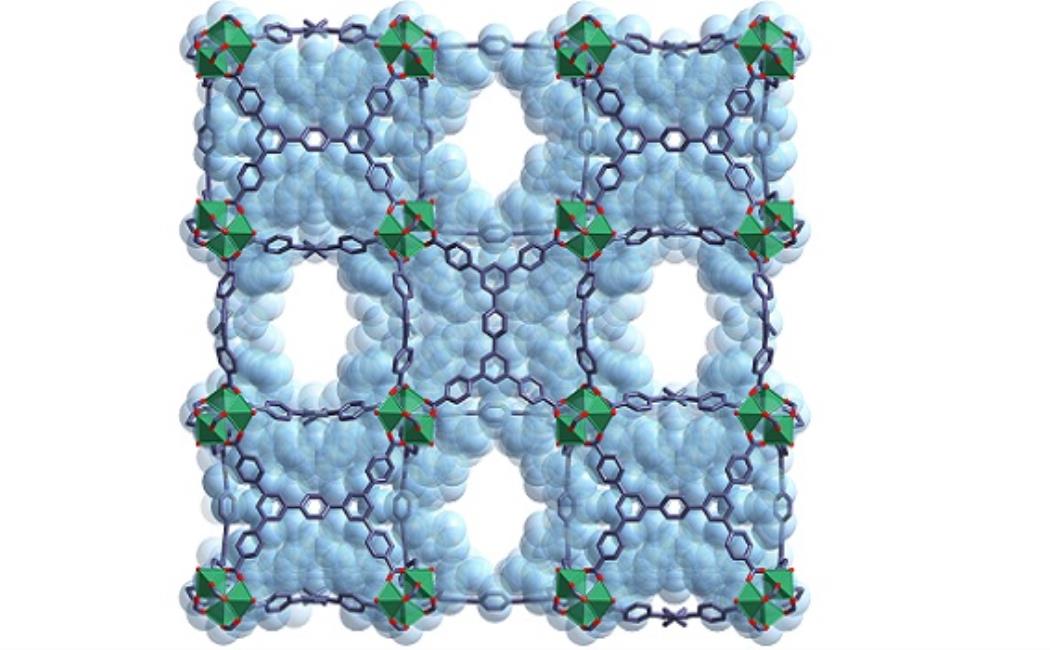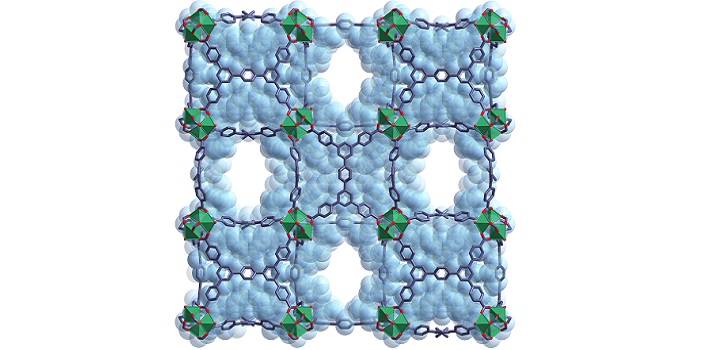


04 February, 2018
 A metal-organic framework that can take up twice its weight in water and then release it when humidity falls.
A metal-organic framework that can take up twice its weight in water and then release it when humidity falls.
Humidity control is a vital aspect of air conditioning, but high energy requirements make conventional methods expensive and environmentally damaging. Researchers at KAUST have developed a metal-organic framework (MOF) that, within its range of applications, could control humidity in an eco-friendly and cost-effective way.
MOFs encompass metal centers or clusters held in a porous framework by organic linker groups. The key to designing a MOF with specific properties is the ability to control the size and chemical structure of the pores by varying the metal and organic parts within each framework.
Dalal Alezi works in Mohamed Eddaoudi’s research group at KAUST where a wide range of MOFs are being developed for gas separation, purification, and chemical catalysis. This work is part of her doctoral research.
“Our super-adsorbent material has unique properties,” explains Alezi. Two breakthrough achievements with the new water-adsorbing MOF (Cr-soc-MOF-1) are its stability in water, unlike many highly porous MOFs, and its high-capacity internal pores that can adsorb twice the weight of the MOF as water (see image). Another vital feature is the easy reversibility of the water uptake. The water adsorbed when humidity levels are high can readily be released when the humidity falls. This yields an ideal material for controlling humidity in restricted spaces.
“Regulating escalating humidity levels, especially indoors and in confined environments, such as aircraft cabins and air-conditioned buildings, is a critical challenge,” says Youssef Belmabkhout, a senior research scientist in Eddaoudi’s group. He adds: “The conventional systems consume large amounts of energy, require intricate design and excessive cost.”
This new material is just one product of Eddaoudi’s long-term commitment to exploring the capabilities of MOFs. “To the best of our knowledge our new water-adsorbing MOF outperforms all existing MOFs in terms of capacity, reversibility and cyclic performance,” says Eddaoudi. The easy reversibility will be crucial for commercial applications. The team has already maintained the exceptional water uptake and release through more than 100 adsorption-desorption cycles.
Eddaoudi also emphasizes that water-adsorbing MOFs are ready to provide effective solutions to challenges other than regulating humidity, such as tackling water scarcity and environmental sustainability in energy-efficient ways. Possibilities include harvesting drinkable water from the air and use in water desalination and purification.
The researchers are now working to scale up their water-adsorbing materials in order to demonstrate commercial potential and move into real-world applications.
 Reticular Chemistry in Action: A Hydrolytically Stable MOF Capturing Twice Its Weight in Adsorbed Water
Reticular Chemistry in Action: A Hydrolytically Stable MOF Capturing Twice Its Weight in Adsorbed Water